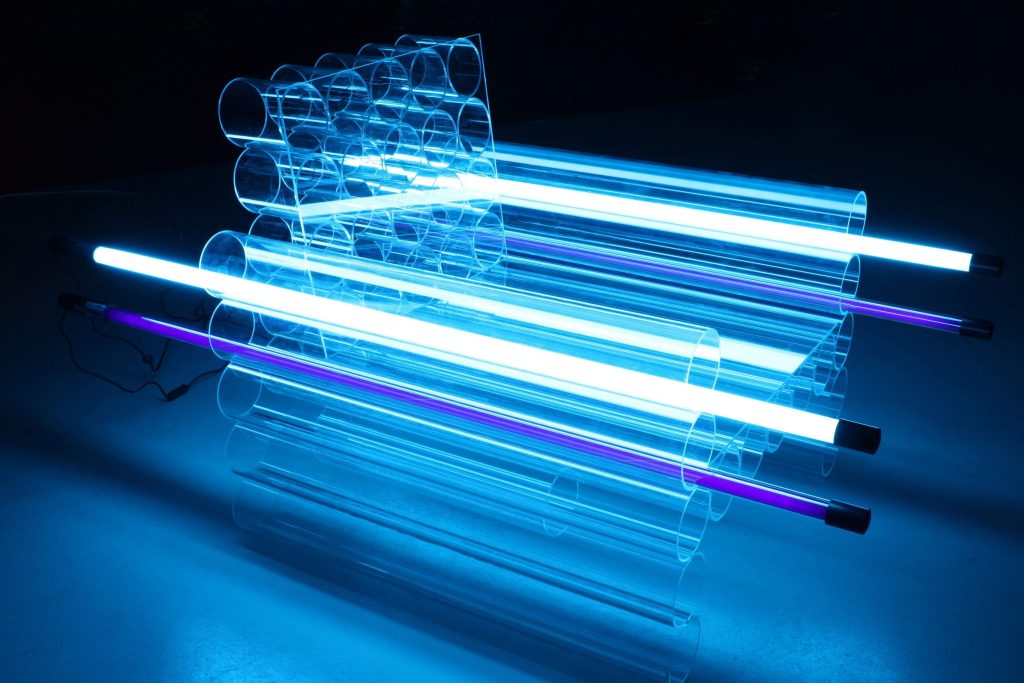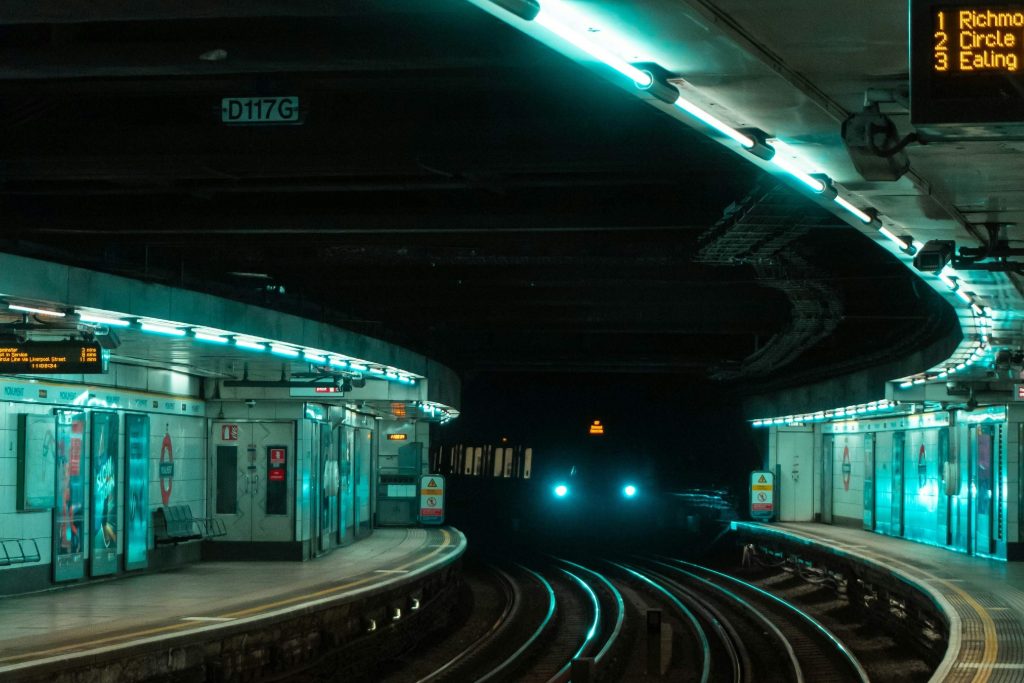LED vs Fluorescent Tube Lights: Uncover the Thrifty Option
The Ascendancy of LED Tube Lights
Over recent decades, we have witnessed an enlightening shift in popular preference towards LED lighting – be it for residential spaces such as landscape lighting or commercial settings like offices and warehouses. The reasons for this ascendency are manifold: their superior energy efficiency compared to classic incandescent tube lamps, their impressive longevity surpassing even that of durable vacuum tube lamps, and their unparalleled range in color temperature options catering to diverse aesthetic preferences.
The rise in popularity can also be attributed to their adaptability – from small desk lamps to large-scale landscape tube lights, LEDs have proven themselves versatile across different applications. Furthermore, despite having higher upfront costs than traditional lighting solutions like fluorescent tubes or incandescent bulbs, consumers are increasingly recognizing that LEDs offer considerable long-term savings due to lower energy consumption and maintenance needs.
Diving Into Lumens & Dollars: Unraveling the Cost-Effectiveness of LED Tube Lights
This post seeks to explore a question that frequently sparks debate among lighting enthusiasts and cost-conscious consumers alike: Are LED tube lights cheaper to run than their fluorescent counterparts? In the quest to answer this, we will delve into a comprehensive cost analysis, exploring not only initial purchase costs but also considering energy efficiency, lifespan, and maintenance costs.
We will also shed some light on technical performance aspects such as brightness, color rendering, and start-up time. Moreover, given the increasing global consciousness towards being eco-friendly, an assessment of the environmental impact of both types of tube lights will form an integral part of our discussion.
Making Light Work: Navigating through the LED vs Fluorescent Tube Debate
Understanding the Basics: LED and Fluorescent Tube Lights
The Intricacies of LED Tube Lights
Light-emitting diodes, or LEDs, are a cornerstone of modern lighting technology, their application permeating various aspects of our daily lives, from household fixtures to landscape lighting. The working principle of these LEDs, especially modern LED tube lights – an energy-efficient alternative to classic incandescent tube lamps – is fascinating.
A diode is a semiconductor device that allows current to flow in one direction. In an LED, this diode is specifically designed to emit light when the electric current passes through it. This stems from the core characteristic of semiconductors: their ability to emit photons (light particles) when their atoms are excited by an electrical charge.

LEDs produce light through a process known as electroluminescence. When voltage is applied across the diode, electrons are able to recombine with electron holes within the device, releasing energy in the form of photons. This effect produces light without generating excessive heat – a primary advantage over traditional incandescent lamps.
The variety and versatility of LEDs make them suitable for a multitude of applications. From small handheld devices like flashlights and mobile phones to larger applications like television screens and digital billboards, LEDs have proven their utility. Moreover, they have become increasingly popular for landscape tube lights due to their long lifespan and high energy efficiency.
LED tube lights provide significant advantages over more conventional forms of lighting. Their robustness and efficient energy usage, coupled with an extended lifespan compared to old vacuum tube lamps or fluorescent tubes, make them an optimal choice for both residential and commercial spaces.
Fundamentals behind Fluorescent Tube Lights
Unlike LEDs, fluorescent lamps fall under gas-discharge light sources, where light is produced by an electric discharge in a gas, liquid, or solid. Fluorescent tube lights can be classified as typical gas-discharge tube lamps. In their simplest form, fluorescent lamps consist of a sealed glass tube filled with a low-pressure mercury vapor.
This tube is coated on the inside with phosphors – materials that emit light when energized. The ends of the tubes house electrodes that are connected to an alternating current (AC) power source. When switched on, electricity excites the mercury atoms, causing them to emit ultraviolet (UV) photons. These UV photons then interact with the phosphor coating on the inner surface of the tube, causing it to fluoresce and emit visible light.
Essentially, fluorescent tubes convert electrical energy into useful light very efficiently and at much cooler temperatures than incandescent lamps. Fluorescent lights have multiple uses ranging from residential lighting to large commercial installations due to their energy efficiency and relatively inexpensive cost.
They are commonly used in offices, shops, warehouses, and other large spaces where flat, diffuse light is preferred. One needs to understand that while they might not have the same spectrum of application as LEDs or provide as much savings in terms of energy consumption or longevity, fluorescent lights still hold their own in certain scenarios where affordability is valued over long-term benefits.
Cost Analysis: LED vs Fluorescent Tubes
The Initial Outlay: LED vs Fluorescent Tubes
The initial purchase cost of lighting solutions distinctly impacts their adoption, and the same applies to modern LED tube lights and typical gas-discharge tube lamps such as fluorescents. The cost of LED tube lights is generally higher than that of fluorescent tubes. At a glance, one might find an average LED tube price lingering around $20, while a fluorescent counterpart may be procured for an average of $6.
Despite this upfront price disparity, LEDs illustrate an economic advantage when perceived through the lens of value-for-price. While they are initially more expensive, modern LED tube lights offer superior efficiency, durability, and versatility that can well justify their higher costs.
Efficiency Analysis: Considering the Landscape of Tube Lights
In the landscape of tube lights, energy efficiency plays a pivotal role in determining overall costs. Remarkably efficient light producers thanks to solid-state technology, LEDs consume nearly 50% less energy than their fluorescent counterparts to generate the same amount of light output, or lumens.
Fluorescents operate based on gas-discharge mechanics, which inherently result in significant heat loss; this wasted energy translates into inflated electricity bills compared to LEDs. Essentially, using landscape lighting or other applications with modern LED tube lights instead of old vacuum tube lamps like fluorescents leads to substantial savings.
Chronicles of Lifespan: From Classic Incandescent Tube Lamps to Modern LEDs
Commendably surpassing classic incandescent tube lamps and even fluorescents in longevity are modern LED tube lights, whose lifespan averages around 50,000 hours. Contrarily, typical gas-discharge fluorescent tubes may endure roughly 30,000 hours before their luminosity begins vanishing noticeably.
This lifespan differential bestows upon LEDs another considerable economic edge. If your landscape lighting, for instance, took advantage of LED tube lights instead of fluorescent tubes, replacement frequency would drastically reduce. Time, effort, and ultimately cost saved from fewer replacements make LEDs a financially tempting proposition in the long term.
Maintenance Considerations: A Side-by-Side Comparison
Maintenance costs significantly contribute to the total lifecycle expenses of any lighting system. For traditional fluorescents, these costs can accumulate rather quickly due to their intrinsic shortcomings.
Fluorescents demand regular replacement of ballasts and starters, which becomes particularly cumbersome and costly if your setup involves hard-to-reach areas such as high-ceiling interiors or extensive outdoor landscape lighting.

LED tubes circumvent this issue by requiring virtually no maintenance beyond occasional cleaning. Incredibly robust LEDs are devoid of delicate parts such as filaments or electrodes found in old vacuum tube lamps or even fluorescents, which makes them less susceptible to failure and negates the need for regular replacements.
To conclude, while LED tube lights entail a higher initial purchase price than fluorescents, they convincingly surpass the latter in terms of energy efficiency, lifespan, and maintenance requirements, ultimately making them more economical in the long run.
Technical Comparison: Performance & Environmental Impact
The Shining Tale: Brightness Level Comparison between LEDs and Fluorescents
When it comes to the brightness level of LED tube lights and fluorescent tubes, a clear divergence arises. Modern LED tube lights are generally more luminous than their fluorescent counterparts. This is due in large part to the exceptional efficacy of LEDs, which can efficiently convert electrical energy into visible light without producing excessive heat.
This means that less energy is wasted as heat and more is used for actual light output, allowing LEDs to often outshine typical gas-discharge tube lamps like fluorescents. The light output from an LED bulb is measured in lumens, with higher numbers indicating greater brightness.
Many consumers are surprised to discover that despite having a lower wattage, LED tube lights frequently produce as much or even more light than classic incandescent or fluorescent tubes. This underscores the superior luminous efficiency of LEDs.
Another remarkable feature of LED technology is its directional lighting capability – it emits light in a specific direction rather than dispersing it all around like fluorescents do. This makes LEDs an excellent choice for focused lighting needs such as landscape lighting or spotlighting.
Coloring the World: Color Rendering Index (CRI) Comparison between LEDs and Fluorescents
In addition to brightness levels, another important aspect when evaluating a lighting source lies in its color rendering capacity – how accurately it reproduces colors compared to natural sunlight.
The color rendering index (CRI), on a scale from 0 to 100, quantifies this ability. LEDs boast impressive scores on this index due to their broad spectrum color capabilities; they can cover almost all hues visible to human eyes, while standard fluorescent tubes have a narrower spectrum and thus receive lower CRI ratings.
The superior CRI scores of modern LED tube lights mean they can represent colors more authentically and vibrantly than fluorescent lamps can. This makes LEDs popular for tasks that demand color precision, like photography or art lighting.
The Speed of Light: Start-Up Time Comparison between LEDs and Fluorescents
Start-up time is another area where LED tube lights truly outshine old vacuum tube lamps like fluorescents. The moment you flick the switch, an LED light comes on instantly at its full brightness.
On the other hand, fluorescent tubes typically require a warm-up period before they reach maximum luminosity. This delay might only be a matter of seconds, but in certain situations – emergency lighting, for example – those seconds could prove crucial.
Earth’s Guardians: Environmental Impact Assessment of LED Tube Lights
Environmental considerations are increasingly important in our world today. As such, it is worthy to note that LED tube lights have less environmental impact compared to classic incandescent or fluorescent tubes. For one, LEDs are more energy-efficient and long-lasting, which reduces the frequency of replacements, thereby decreasing resource consumption and waste generation.
Secondly, unlike fluorescents, LEDs do not contain mercury – a toxic heavy metal that poses serious environmental risks when improperly disposed of. Furthermore, due to their low power consumption and high efficiency levels, LED tube lights help reduce greenhouse gas emissions from power plants, as less electricity is required for their lighting compared to old vacuum tube lamps.
Conclusion: Are LED Tube Lights Cheaper to Run than Fluorescent Tubes?
Not only does the adoption of LED technology provide economic benefits through lower running costs, but it also delivers superior performance in terms of brightness levels and color rendering along with immediate start-up times. Moreover, LEDs help safeguard our environment by reducing waste production and carbon emissions while eliminating the use of hazardous substances such as mercury – truly a shining beacon towards a brighter future for all.
You may also be interested in the following posts:
